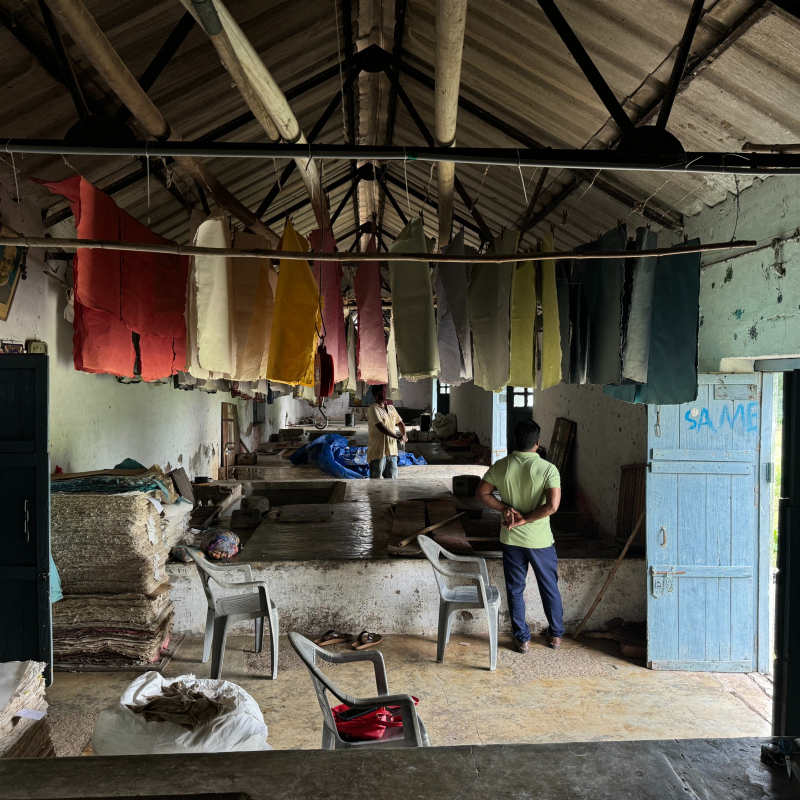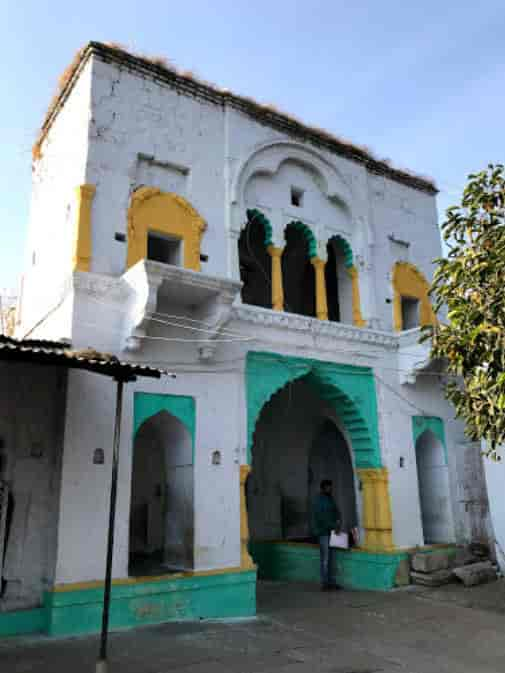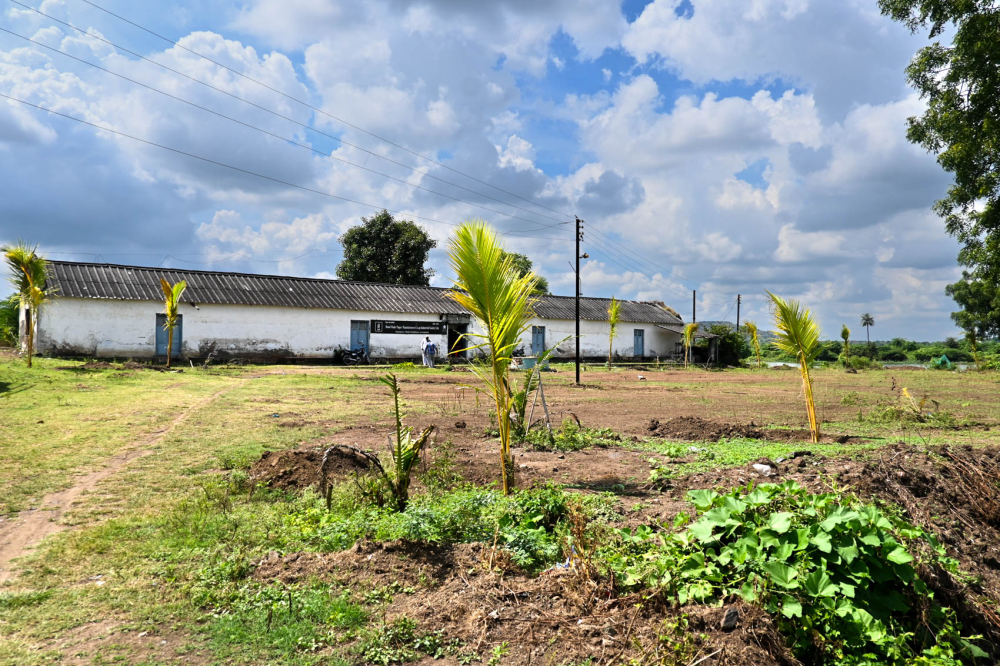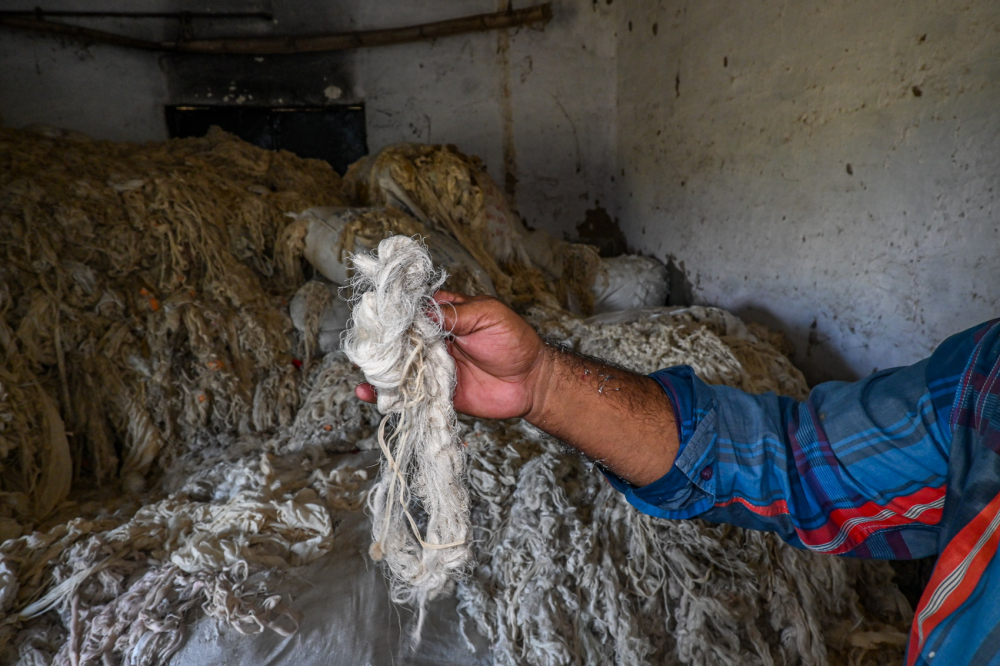A Glimpse into Kagzipura

In the district that carries myriad histories and bountiful legacies, Kagzipura has maintained a relentless pursuit of a niche handmade paper industry. This town is situated as we traverse from Ellora Caves in Khuldabad to Daulatabad Fort in Aurangabad, i.e., Sambhajinagar, Maharashtra. Kagzipura, as its effervescent name suggests, stands for the city of ‘Kagaz’ or paper. There are cottage and locally-sourced industries in Kagzipura which craft paper bags, folders, notebooks, coasters, frames, and many more widely accessible and sustainable products. The artisans who carefully weave these goods of paper from scratch trace their roots back to the Sultanate period and are called ‘Kagzis.’
Historical Origins and Trajectory
In today’s whirlpool of accelerating demand for mechanical surfaces and technology, this seven-century-old paper tradition still finds its name in the annals of the Maharashtrian craft sector. Kagzipura, as aforementioned, is still referred to by the skilled Kagzis, i.e., the ones who made paper. According to popular narrative, these artisanal communities shifted from Delhi to Daulatabad during Mohammad Bin Tughlaq’s infamous Deccan campaign to shift capitals. During this historic migration, myriad weavers, artisans, and craftspersons of various regions collectively came together at this place. These sects of professionals also included papermakers since paper was a relatively scarce entity in India, especially in the Deccan.

A Continuous Legacy of Papermaking
From the popularisation of this practice, papermaking was practiced endlessly for centuries in Kagzipura. In the twelfth to fourteenth centuries, Kagzipura had a total of ten mills for papermaking. The village features two tanks built by the Tughlaq dynasty to facilitate a siphon water system in the area. The water for these tanks originates from a few kilometers away from Thathe Nahar. Local laborers utilised this water in the paper mill production, alongside the residents of the area. Kagzipura’s history includes not only the ancient water tanks and paper mills but also the Masjid Hauz-e-Zumboor and Dargah Kadri nearby, whose architectural styles date back to the late fourteenth century. Some sources shed light on the indigenous species of plants known as the Marsali Tree, which were located in the surrounding area and played a significant role in paper production. These species were likely introduced by the Mughal emperors. In recent years, the village has gained notoriety for its cotton-based products, including handmade cards, vivid lampshades, and sculptures. By the second half of the twentieth century, nearly every abode in the town was a workshop or karkhana.
Intricacies of Paper Making

During the initial centuries of paper making in Kagzipura, the entire process of inculcating cotton, hemp fibre, tree bark, and moss from lakes was used to give a top-notch quality to the paper. The raw material is amalgamated with water in a tank and is beaten to transform it into a cream-like consistency. Then, a finely woven sieve was submerged in the creamy pulp, the sieve was taken out of the tank, and the excess water was squeezed out. The drying process included pressing the mixture to eliminate remaining moisture. Furthermore, the latter was rolled into a sheet of paper with a nearly-smooth texture with the aid of pumice stone or wood. In medieval times, paper was also treated with a specially formulated adhesive to render it non-porous. Various floral petals and golden flakes were added to create different textures in the paper.

Integrating Mechanized and Traditional Papermaking
In contemporary times, machines are incorporated in the crafting of handicraft paper. Machines like shredders, polishers, beaters, and so on are utilised heavily, but the majority of processes remain simplistic and similar to before. Some shredded chindhis or canvas rags, along with vegetable fiber, are soaked in water for a night. After soaking, this mixture is processed in the beater to create a pulp-like consistency. This mixture is then moved to a hauz with a capacity of around four hundred liters, wherein the creamy pulp is continuously checked and stirred till it settles completely. A large rectangular frame, covered with a bamboo or cane mesh, is dipped horizontally into the hauz and then slowly and steadily lifted. It is left for a short amount of time to allow excessive water and moisture to drain away. The thin layer of creamy pulp mixture collected is then covered with terrycloth sheets, which are transferred onto a wooden ply. This stack of layered pulp is pressed to eliminate the remaining water, if any. Each paper sheet is carefully separated by hand, and they are then hung to dry for a day before being polished with a machine. An average worker may manufacture a range of three hundred to four hundred sheets of paper each day, deeming these handmade papers environmentally sustainable.

Renaissance of the Craft
Organisations like Cosmo Foundation (the CSR arm of Delhi-based Cosmo First Limited) and the Indian National Trust for Art and Cultural Heritage (INTACH) have revived this centuries-old tradition of paper-making in Kagzipura by building several institutions and programs. These organisations, and more, have scheduled several training workshops and campaigns for artisans and the paper-making heritage of Kagzis of Kagzipura. In the nineteenth century, the effervescent business of papers saw a decline due to the increasing development of machine-made papers. In the 1930s, ruler Nizam Asaf Jah VII founded a cooperative society called ‘Handmade Paper Manufacturers Co-Operative Industrial Society Ltd’ for all families to practice their artisanry techniques of paper-making. The workers of this facility still work in shifts, along with the women who are actively involved in the making. They are also involved in other occupations like agriculture, and hence, the working ethic and culture are seeing continuity with technological growth, which helps the quality of papers made.

Conclusion: A Chequered Future?
Much like many receding craft practices, the condition of Kagzipura’s traditional papers is aching, yet it has hopes of resurgence. Due to inadequate marketing of products, lack of skilled labour, and decline in bureaucratic schemes, the paper-making craft is witnessing a gloomy future. However, with credible policies and a systematic governmental approach, this sector is bound to see a silver lining. In the face of constant decline, it becomes paramount to give hope to artisanal skill and craftspersons who are solely dependent on this industry—not just for their survival but for fueling the flame of traditional Kagaz art.
References:
Kagzipura: History in a Piece of Paper | Sahapedia. (n.d.). Sahapedia. https://www.sahapedia.org/kagzipura-history-piece-paper
Piyali Sen. (2022, December 30). The 700-Year-Old craft of handmade paper in Kagzipura. Outlook Traveller. https://www.outlooktraveller.com/explore/culture/a-revival-of-handmade-paper-with-kagzipura
Ar. Navneet Kaur Bhatia, Heritage and Sustainable Solution- A Case of Kagzipura, Aurangabad. Krishi Sanskriti Conference (2014) https://krishisanskriti.org/vol_image/09Sep201508094610.pdf
Tejaswini Nadgauda, Tejaswini Aphale and Smita Geedh, Kagzipura – Traditional Handmade Paper Manufacturing. https://www.researchgate.net/profile/Smita-Geedh/publication/321418610_Kagzipura_-_Traditional_Handmade_Paper_Manufacturing/links/5a20e4584585158865c51f58/Kagzipura-Traditional-Handmade-Paper-Manufacturing.pdf




